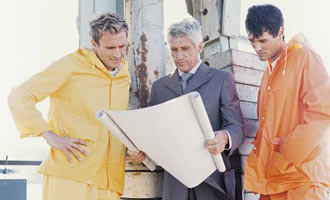Achilles'Heel
It is difficult to verify a single weak link in the supply system — exploration sites to the production sites, refineries and storage terminals — as different areas face different threats. Rigs and remote exploration sites are open to threats, since there are minimal deterrent features provided by security, Lim said.
 Monitoring for transportation pipelines on land or underwater requires careful forethought, as they extend for kilometers across various terrains. A complete surveillance system covering the length of the pipeline system is rare, if not nonexistent. As a result of the distance covered, active security measures cannot be applied, said Evgenia Ostrovskaya, Global Business Development Director, Axxon. “Surveillance is used to catch any movement near the pipelines since it is not common for workers to need to be there.”
Monitoring for transportation pipelines on land or underwater requires careful forethought, as they extend for kilometers across various terrains. A complete surveillance system covering the length of the pipeline system is rare, if not nonexistent. As a result of the distance covered, active security measures cannot be applied, said Evgenia Ostrovskaya, Global Business Development Director, Axxon. “Surveillance is used to catch any movement near the pipelines since it is not common for workers to need to be there.”
Some experts found the weakest link at onshore facilities, including storage terminals and refineries. The large areas these facilities occupy make it impossible for guards or a simple security system alone to provide sufficient protection, Lim said. For onshore facilities, strict access control is crucial for the site managers to monitor incoming and outgoing traffic. “Special attention needs to be paid to access control systems in these locations, as a large number of workers and contractors often come through the facility. It is important to be able to accurately track and account for all persons who have visited the site, and any area they may have accessed,” said Brian Karas, Director of Field Engineering, VideoIQ. “The video surveillance system is usually tied into the access control system so there is a visual record of the persons associated with a badge read at any given point and time.”
Effective access control for oil and gas facilities is similar to many other verticals, although management might differ based on national or international regulations for critical infrastructure. “There is a distinguishable difference in the way access control is managed between oil and gas facilities, driven mainly by specific safety requirements. Much emphasis is placed on safety regulations compliance in order to grant access to vehicles and pedestrians,” Alexander said. “The gas facilities are generally cleaner in appearance as a result of higher housekeeping standards and present fewer challenges for tasks like patrolling to be efficiently carried out.”
Security Management
Security vulnerability assessments (SVAs) are necessary throughout the planning and running stages of oil and gas facilities. They are tools for US and international site managers to better assess and prioritize security risks, and respond with appropriate actions, according to the “Security Guidelines for the Petroleum Industry” published by the American Petroleum Institute (API). SVAs are encouraged to take place not just at specific facilities, but also along the distribution supply chain.